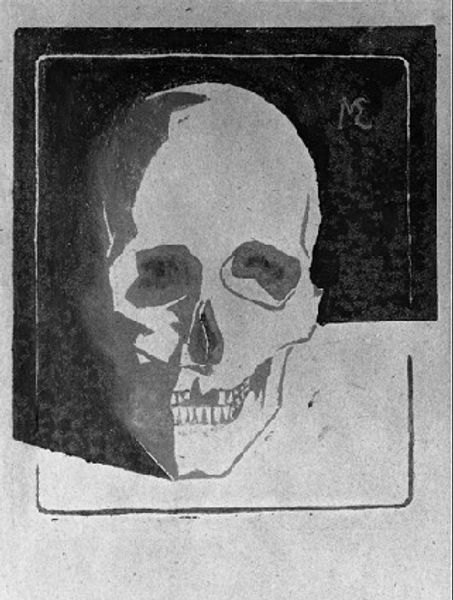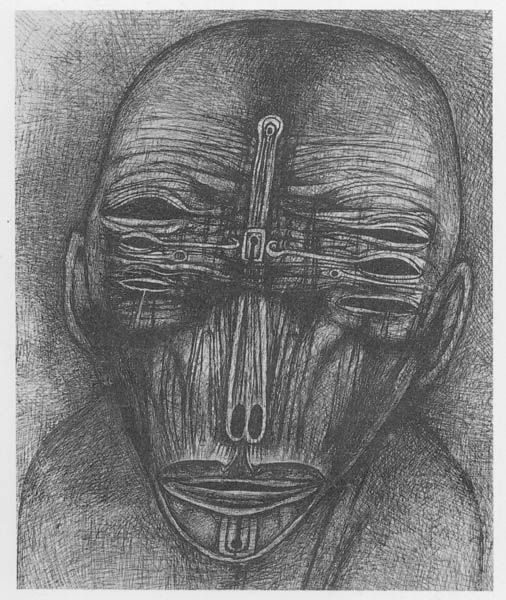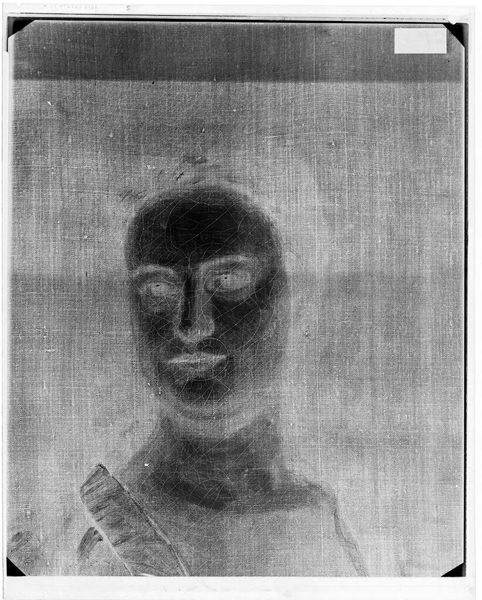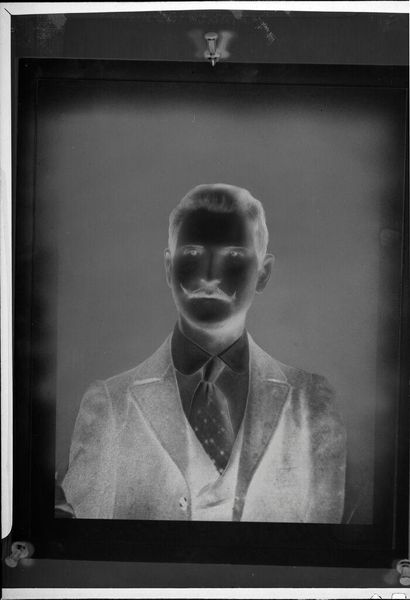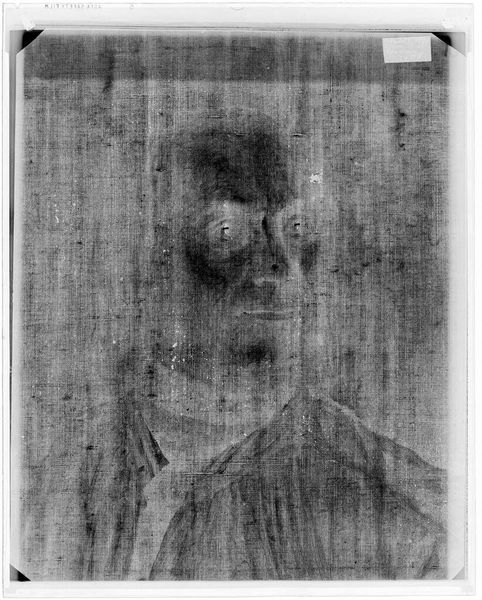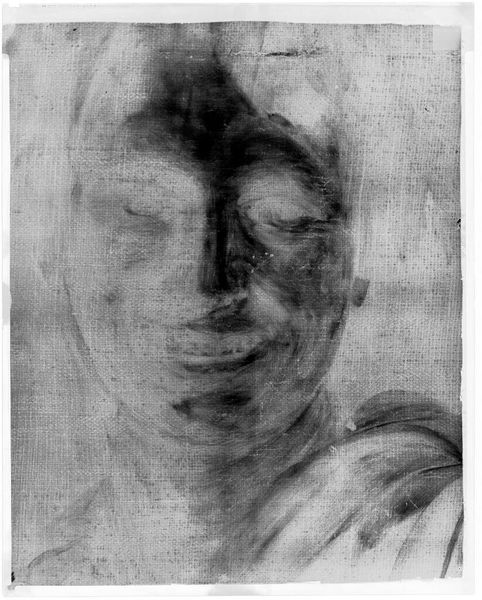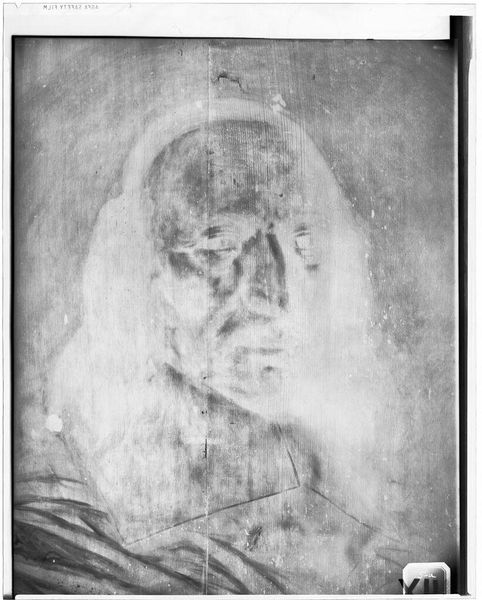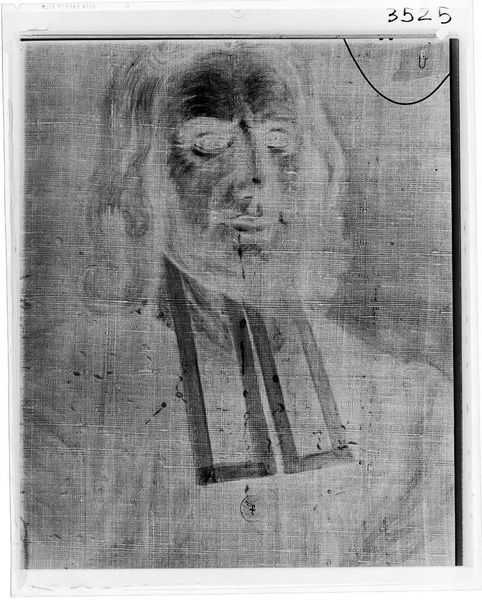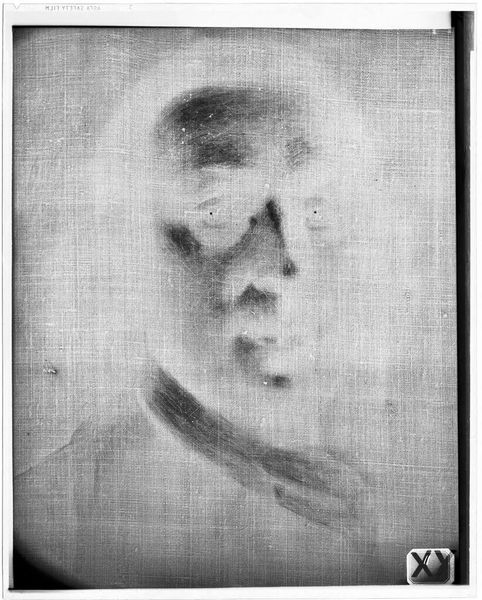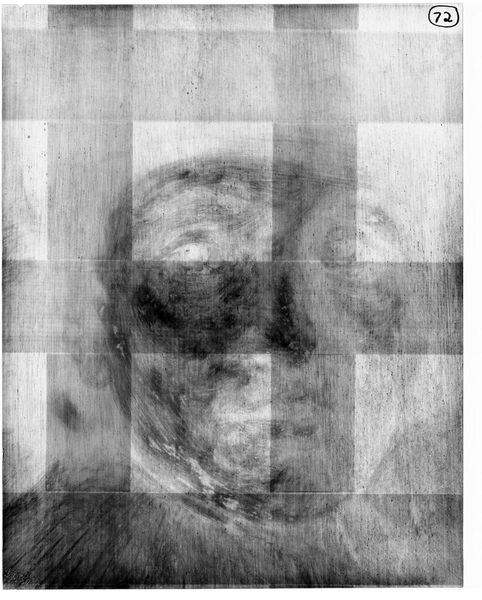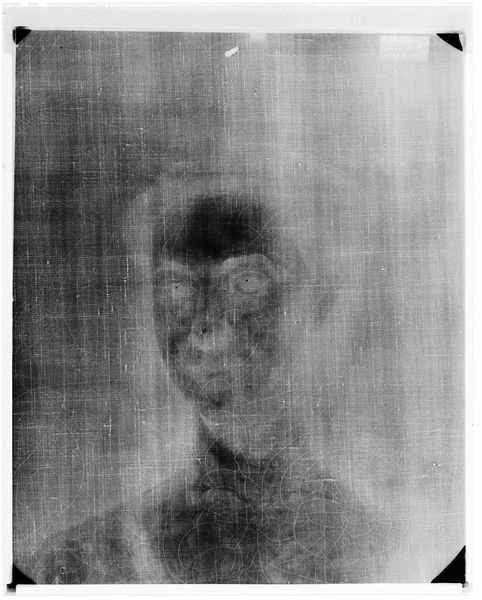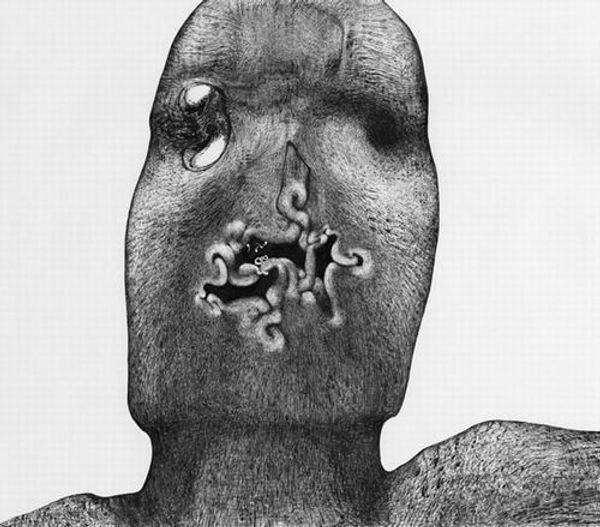
Copyright: Francis Bacon,Fair Use
Editor: This is Francis Bacon's "Head of Man," painted in 1950 with oil paint. The stark contrast and distorted features create a very unsettling mood for me. How do you interpret this work, particularly in light of the time it was created? Curator: It's crucial to consider the socio-political context of post-war Europe. Bacon, as part of the School of London, grappled with themes of existential anxiety and the fractured self. Look at how the face is almost decomposing, yet contained. Doesn't that speak to the struggle to maintain identity in the face of overwhelming trauma and societal upheaval? Editor: I see what you mean. The way the figure seems trapped within this dark background really amplifies that feeling of being trapped, maybe psychologically? Curator: Precisely. This echoes broader existentialist thought prevalent at the time, challenging traditional notions of the stable, knowable self. How might we consider the expressionistic style as a deliberate rejection of traditional portraiture’s power structures and representations? Editor: So, rather than celebrating the individual, Bacon is exposing vulnerability and perhaps questioning traditional ideas about power and the individual's place in society? The monochrome enhances the visceral feel. Curator: Absolutely! Bacon confronts us with a raw, unflinching depiction of the human condition. This is art that demands we question not just what we see, but also what it means to be seen. It’s not easy but deeply impactful. Editor: I definitely see how situating it in the context of post-war anxieties unlocks so much more than just the surface-level depiction of a distorted face. Thank you. Curator: My pleasure. Remember, art history is about constantly re-evaluating the narratives embedded in these works, especially through critical, intersectional lenses.
Comments
No comments
Be the first to comment and join the conversation on the ultimate creative platform.
